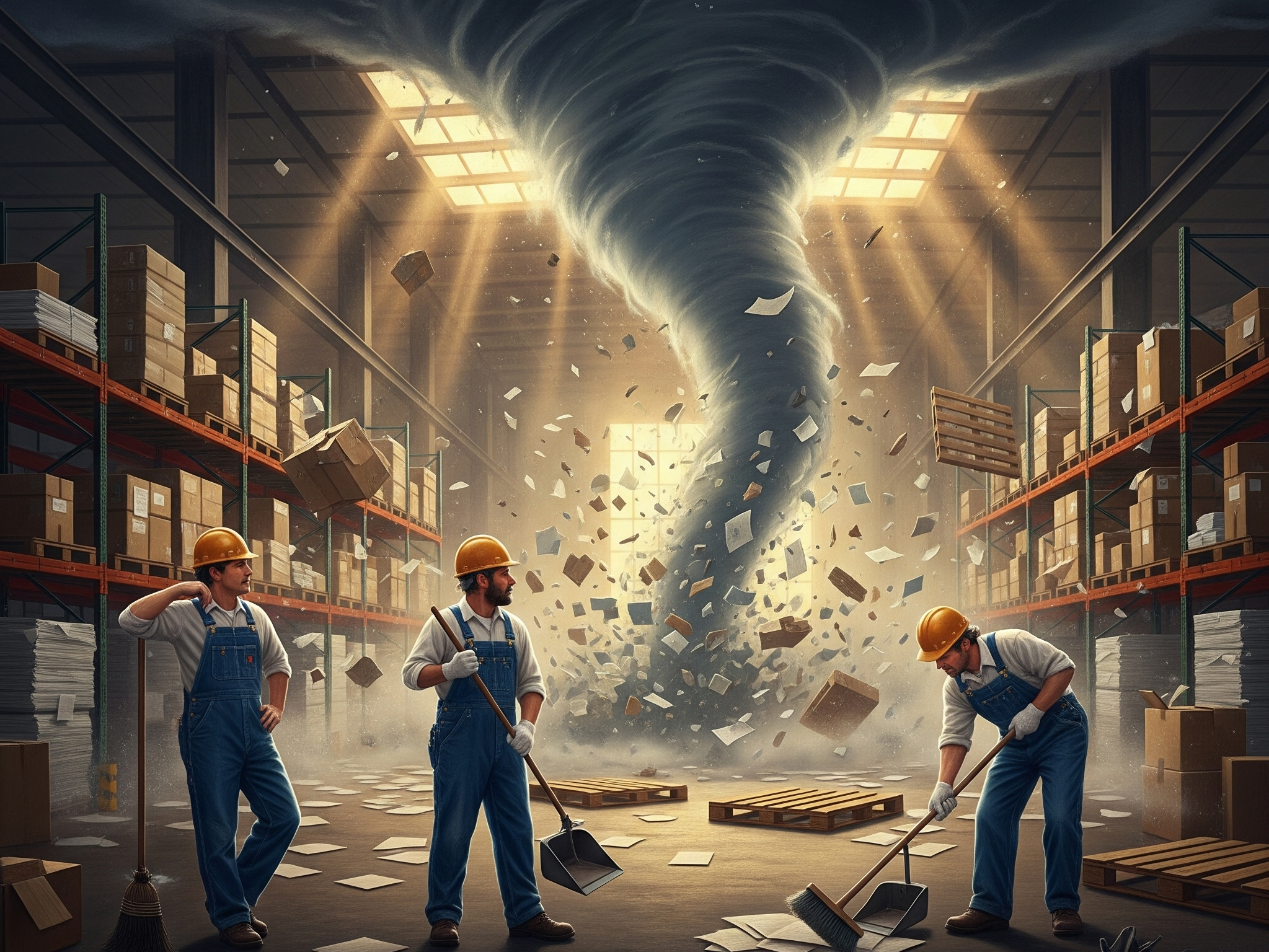Beyond Tidiness: Why Housekeeping is the Cornerstone of Safety
In any setting, from the most intimate personal spaces to the vast, complex operations of global industry, there's a principle so fundamental to well-being that it often goes unnoticed: good housekeeping. It’s far more than just tidiness; it’s the bedrock upon which effective health and safety practices are built. Without diligent housekeeping, even the most advanced safety protocols can crumble, leaving individuals vulnerable to preventable harm.
Consider the enormous scale of the challenge. The International Labour Organisation (ILO) estimates that a staggering 395 million non-fatal work injuries happen worldwide each year.
While it’s difficult for global bodies to pinpoint an exact number directly attributable to "poor housekeeping" as a standalone category, its influence is undeniable and pervasive. The ILO highlights that slips, trips, and falls are among the most common causes of workplace injuries, and it explicitly states that many of these are a direct result of inadequate housekeeping – wet or contaminated floors, cluttered pathways, and improper storage. The difficulty in isolating "poor housekeeping" as a single cause stems from its insidious nature. Its effects often manifest as other types of accidents.
An obstructed pathway, a clear sign of poor housekeeping, might lead to a fall from height, or an incorrectly stored tool could result in contact with machinery. These incidents are then categorised by their immediate cause, rather than the underlying housekeeping deficiency that initiated the chain of events. Furthermore, the global aggregation of data, with varying definitions and collection methods across different regions, makes it challenging to draw a precise, globally consistent figure for housekeeping-related incidents. Despite these statistical complexities, the message is clear: poor housekeeping is a major contributing factor to a vast number of injuries annually.
It creates an environment ripe for accidents. Imagine any operational setting where tools are left haphazardly, materials are piled unsafely, or spills are not promptly addressed. This isn't just an untidy scene; it’s a landscape of hazards waiting for an incident to occur. A missed step, a bumped knee, or a more serious fall could be the immediate consequence, leading to personal suffering, lost time, and broader disruptions. The importance of housekeeping extends beyond preventing physical injuries. It is a multi-faceted discipline addressing a wide spectrum of potential harms. For instance, fire safety is intrinsically linked to organisational habits. Accumulations of easily combustible materials – be they discarded packaging, forgotten documents, or soiled rags – create fuel for potential blazes. Regular removal and proper storage of such items are fundamental principles of good housekeeping that significantly reduce fire risks.
Similarly, controlling exposure to hazardous substances relies heavily on consistent cleanliness. Regularly wiping down surfaces minimises chemical residue and airborne dust, thereby improving overall air quality and reducing the risk of respiratory issues or skin irritations.
Proper storage, labelling, and disposal of all substances, including chemicals, are also crucial housekeeping functions that prevent accidental contact or environmental contamination. Crucially, good housekeeping fosters a proactive safety culture. In clean and organised spaces, hazards are far more visible. A frayed electrical cord, a blocked emergency exit, or a malfunctioning piece of equipment stands out immediately against a backdrop of order. This heightened visibility enables swift action, transforming potential incidents into non-events. It empowers everyone to take responsibility for their surroundings, cultivating a mindset of vigilance and immediate correction.
This level of meticulous attention to detail and a proactive approach to safety is particularly characteristic of High Reliability Organisations (HROs). These are entities that operate in high-risk environments but manage to maintain remarkably low accident rates. A core principle of HROs is their relentless pursuit of error detection and correction, often before errors can escalate into catastrophic failures.
Good housekeeping aligns perfectly with this ethos. It's not just about cleaning up after a mess; it's about anticipating where messes might occur, understanding their potential consequences, and putting systems in place to prevent them or address them immediately. For an HRO, a cluttered aisle isn't just an untidy space; it's a potential weak link in their safety chain, a signal that diligence may be wavering. Their commitment to safety extends to every seemingly small detail, making impeccable housekeeping an integral part of their operational excellence and hazard prevention strategy.
Ultimately, housekeeping is not a one-time task but an ongoing commitment. It demands continuous effort and the active participation of every individual within a given environment. From implementing clear, designated storage zones and ensuring regular waste removal to maintaining equipment and promptly addressing spills, each seemingly minor act of housekeeping contributes to a larger, robust framework of safety. It's about embedding a mindset where vigilance for potential hazards becomes second nature to everyone.
While it may lack the dramatic urgency of emergency response or the complex engineering of advanced safety systems, housekeeping remains the quiet, indispensable backbone of health and safety. It is the Consistent, diligent effort that detects potential problems early, prevents escalation, and ensures that every operational setting remains a safe and healthy environment. By fully understanding its fundamental importance and adopting the meticulousness of High Reliability Organisations, we raise housekeeping from a mere task to the vital foundation it truly is for safeguarding well-being everywhere.

